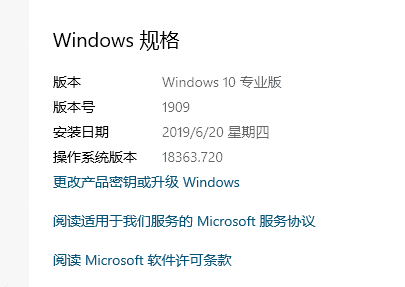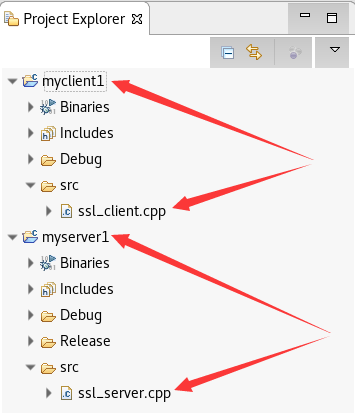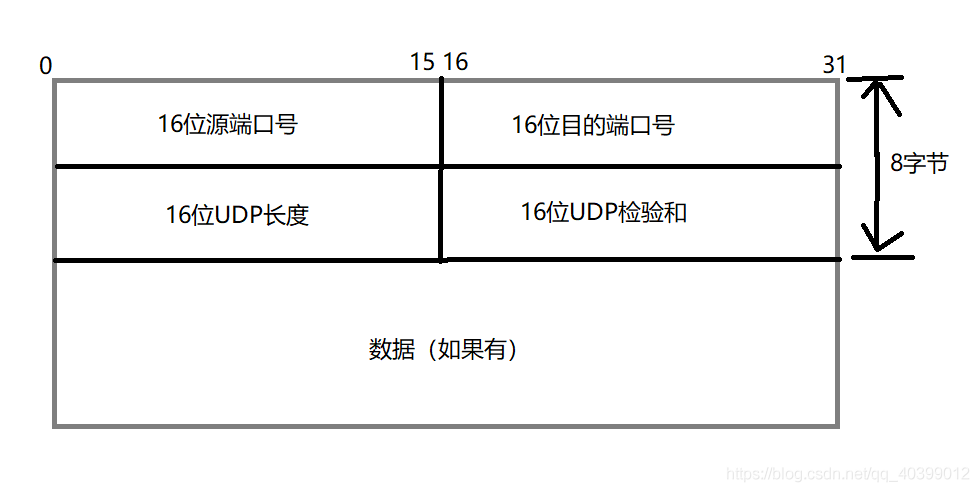UDP的理论不再多说,我这里直接给出一个关于UDP的HelloWorld程序,代码明了,希望对刚入门的学生有所帮助!
当然,实际上,在这块我也刚入门!
首先写服务端代码,服务端邦定本地的IP和端口来监听访问:
package udp;
import java.io.IOException;
import java.net.DatagramPacket;
import java.net.DatagramSocket;
import java.net.InetSocketAddress;
/**
* UDP服务类
*/
public class UdpServerSocket {
private byte[] buffer = new byte[1024];
private static DatagramSocket ds = null;
private DatagramPacket packet = null;
private InetSocketAddress socketAddress = null;
/**
* 测试方法
*/
public static void main(String[] args) throws Exception {
String serverHost = "127.0.0.1";
int serverPort = 3344;
UdpServerSocket udpServerSocket = new UdpServerSocket(serverHost,
serverPort);
while (true) {
udpServerSocket.receive();
udpServerSocket.response("你好,吃了吗!");
}
}
/**
* 构造函数,绑定主机和端口
*/
public UdpServerSocket(String host, int port) throws Exception {
socketAddress = new InetSocketAddress(host, port);
ds = new DatagramSocket(socketAddress);
System.out.println("服务端启动!");
}
/**
* 接收数据包,该方法会造成线程阻塞
*/
public final String receive() throws IOException {
packet = new DatagramPacket(buffer, buffer.length);
ds.receive(packet);
String info = new String(packet.getData(), 0, packet.getLength());
System.out.println("接收信息:" + info);
return info;
}
/**
* 将响应包发送给请求端
*/
public final void response(String info) throws IOException {
System.out.println("客户端地址 : " + packet.getAddress().getHostAddress()
+ ",端口:" + packet.getPort());
DatagramPacket dp = new DatagramPacket(buffer, buffer.length, packet
.getAddress(), packet.getPort());
dp.setData(info.getBytes());
ds.send(dp);
}
}
运行后提示服务端运行成功,程序开始监听端口,接收方法堵塞,当有访问时才会向下进行!
我们写客户端进行访问,看到网上的例子都是直接创建了 DatagramSocket 对象,而其实自己都不知道自己使用的端口是那个,这里我创建时会指定自己邦定的端口,其实很简单,就是初始化该对象时传递一个端口参数。
这里你访问客户端时客户端会打印你的IP和端口!
看一看客户端代码:
package udp;
import java.io.*;
import java.net.*;
/**
* UDP客户端程序,用于对服务端发送数据,并接收服务端的回应信息
*/
public class UdpClientSocket {
private byte[] buffer = new byte[1024];
private static DatagramSocket ds = null;
/**
* 测试客户端发包和接收回应信息的方法
*/
public static void main(String[] args) throws Exception {
UdpClientSocket client = new UdpClientSocket();
String serverHost = "127.0.0.1";
int serverPort = 3344;
client.send(serverHost, serverPort, ("你好,亲爱的!").getBytes());
byte[] bt = client.receive();
System.out.println("服务端回应数据:" + new String(bt));
// 关闭连接
try {
ds.close();
} catch (Exception ex) {
ex.printStackTrace();
}
}
/**
* 构造函数,创建UDP客户端
*/
public UdpClientSocket() throws Exception {
ds = new DatagramSocket(8899); // 邦定本地端口作为客户端
}
/**
* 向指定的服务端发送数据信息
*/
public final void send(final String host, final int port,
final byte[] bytes) throws IOException {
DatagramPacket dp = new DatagramPacket(bytes, bytes.length, InetAddress.getByName(host), port);
ds.send(dp);
}
/**
* 接收从指定的服务端发回的数据
*/
public final byte[] receive()
throws Exception {
DatagramPacket dp = new DatagramPacket(buffer, buffer.length);
ds.receive(dp);
byte[] data = new byte[dp.getLength()];
System.arraycopy(dp.getData(), 0, data, 0, dp.getLength());
return data;
}
}
直接运行程序看效果!
以上就是本文的全部内容,希望对大家的学习有所帮助,也希望大家多多支持潘少俊衡。
版权声明
本文仅代表作者观点,不代表本站立场。
本文系作者授权发表,未经许可,不得转载。
本文地址:/jtjc/Linux/107765.html













